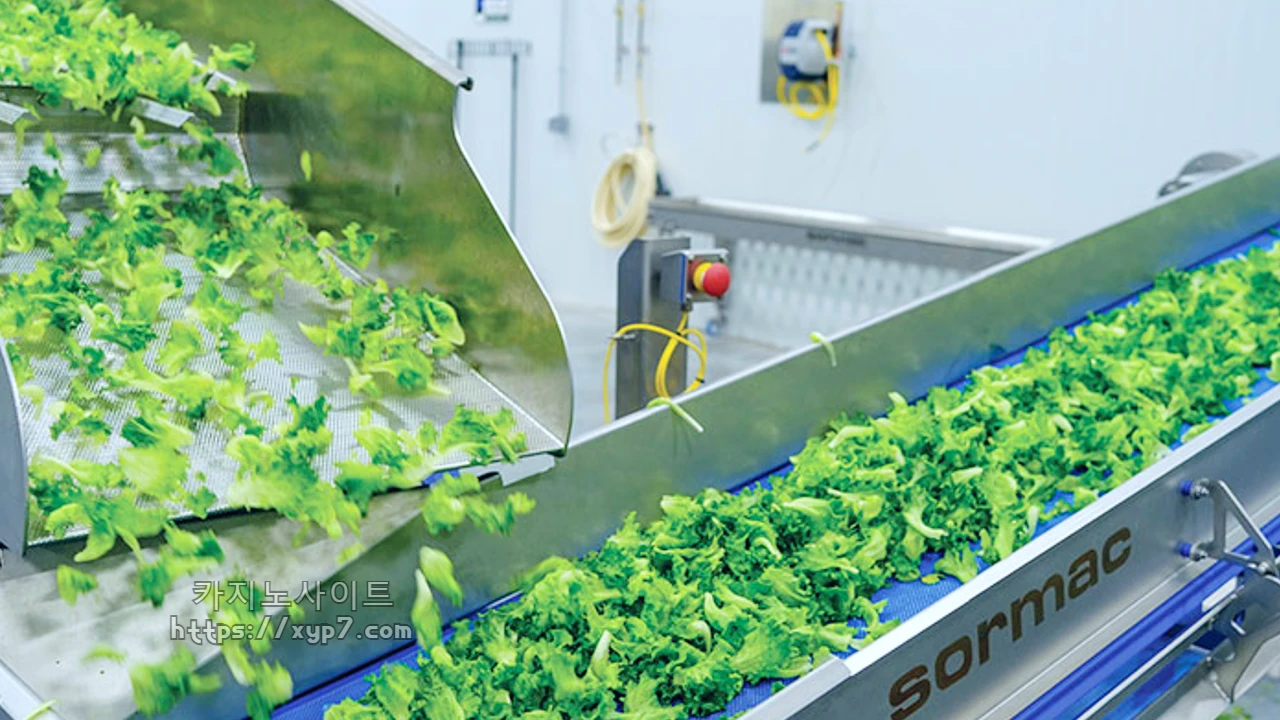
Bowery Farming Brings Technology to the Table
The diet is flexible. Changing consumer food preferences and eating habits are driving a shift from commodity-driven, mass-driven supply chains to processed foods, integrated foods and agricultural systems. Adapting to this dynamic environment requires us to rethink the food system where technology enables innovation, consumer demand drives innovation, and sustainability shapes investment decisions. — from the consulting firm EY.
Whether or not EY had Bowery Farming in mind when he came up with this paragraph, the description fits. Bowery Farming is a vertical farming company in the United States, an emerging company that is disrupting the food system to meet changing consumer preferences, driven by innovation and sustainability. To enable this new way of farming, Bowery Farming applies automatic storage and retrieval (AS/RS) technology.
Justin Frankert, vice president of robotics for hardware and automation, said, “We are building the future of food through intelligent farms and proprietary technologies that are easier, safer and more sustainable than traditional agriculture.” “We design and build smart farms that use a combination of our operating systems and technologies. We are 100 times more productive using less resources. “
In Bowery Farming’s vertical farm, crops are grown in special palletized trays that move out of storage while other technologies create the right combination of light, heat, humidity and water for a grass or green leaf. Vertical walking uses the cube of the building, rather than horizontal in traditional farming, and AS/RS technology enables greater security. By climbing 40 feet into its warehouse, Bowery Farming gets 30 times the yield from its space compared to traditional farming.
Read: 5 Reasons to Support Your Farmers Market
“In outdoor farming, you have rows of crops and you need space to plant,” Frankert explains. “We don’t have this problem. Allgetets and trays are stays in a higher level of cost and a formal patterns, then one tree makes a space near.”
To save the cleansing of the product as food as the whole meal, Walmart and Albertsons, miles from the market service; This product is connected and took a few days of harvest. “We don’t preserve our crops, which is another way to disrupt the food supply system,” Frankert said. “We deliver directly from our farm to the customer.”
This device represents a unique combination of traditional and efficient technology. It uses an AS/RS control pallet and sensors and lights. It goes to show that just when we think we’ve used up all the automation, new opportunities like vertical farming keep popping up.
Become Vertical
The airport can be explained as a composer that makes it outdoors, placing a higher farming with aquaponics and aquaponics to a variety of farms and items like the store as of the body of the bush-driven by the bush. The appeal is simple: as more people move to urban and rural areas and rural areas expand into rural areas, less land is available for traditional agriculture. Vertical farming helps to get fresh, well-grown food closer to market. In addition to creating a growing environment, indoor vertical farming allows farms to grow year-round – they are not affected by seasonal changes or extreme weather conditions, to unexpected drought, extreme heat or cold.
This idea is often attributed to Columbia University professor Dickson Despommier, who in 1999 with his students built an airplane that could feed 50,000 people. The idea caught on, even though no one built the tower. Vertical farming is supported by the United States Department of Agriculture, which says research funding is available from the National Institute for Food and Agriculture. Vertical farming has attracted funding from private equity firms and communities. Bowery Farming raised $646.6 million, according to Crunchbase. It is the only company entering this space worldwide.
According to Irving Fain, the founder of Bowery Farming, the company started in 2015 “with the belief that technology and innovation can be the driving force in making our food system better.
The consumption of the natural properties of farming, not as weather conditions, and lack understanding and understanding, working large and a problem system. »
Based on the Irengving Fin, who uses a good company in 2015 “in the confirmation of new and new things that can be an engineer of farming of agricultural work, do not appear to weather, as well as understanding and understanding, working large and troubleshoot system. »
FIN describes the company as farming at this time to develop food for better future, by increasingly technologies in the farmers. “We are modern farmers,” he added, “determined creators, builders, problem solvers and team players, living our lives every day.”
Non-organic companies; However, no insecticides or pesticides are used to grow the crops. “There is a complex technology that allows us to control the light, temperature and irrigation so that each 4ft by 8ft tray can give him a recipe that can be different from a tray on the side of the road, ” explains Frankert. . “It’s very different that you and I grow plants in our windows.”
Read: Best Gambling Stories – Winnings are Twice as Sweet as Earnings
The backbone of the farming system at Bowery Enterprises is BoweryOS, the company’s operating system. BoweryOS uses a network of sensors and cameras across the entire “farm” to monitor and collect data on growing conditions and make changes to improve crop growth. “If a tray or an area does not meet the approved design criteria, we can move the tray to a different environment within the AS/RS to achieve higher compliance for the design. Many area improvements can be made,” Frankert saying. In this sense, lifts and pallets move trays more than AutoStore robots move bins to improve inventory space, but perhaps not always.
In addition, agricultural equipment and technology are designed in-house and customized for Bowery Farms, including AS/RS and load systems. To achieve this, the company invested heavily in talent: Frankert, for example, previously worked at SoftBank Robotics, where he focused on technologies for micro-distribution centers in the 7,500 to 10,000 range. square feet.
Automation Optimization
According to Frankert, who joined the organization two years ago, Bowery Farming realized early on that software, technology and automation would be key to its success. If you look at vertical farming pictures, most of the images show crops being grown in traditional warehouses, not all of which reach the roof of the warehouse. Bowery Farming decided to use the cube as much as possible in automatic storage. “When they were doing our first farm in New Jersey, they knew we could grow food in their greenhouse,” Frankert says. “The question is if they can do it in a growing environment, do it at scale, and be able to get it to harvest.”
The software was developed in-house, including Bowery’s operating system and warehouse clearance system to run the inventory management system. The Bowery Farming team also secured the AS/RS and delivered it to the mechanics. The AS/RS should accommodate 4ft by 8ft trays and the equipment will operate in damp and sometimes wet conditions. As it was designed, it includes custom lifters to bring the pallet to the correct height, then transfer it or return it to the storage area.
“None of this equipment exists, so we had to design it and test it to prove that it works,” says Frankert. When he joined the company, Bowery Farming was operating its first facility in New Jersey and a second facility in Maryland while building its third facility, a 150,000 square foot facility in Bethlehem, Pennsylvania. Bowery Farming operates two other projects designated as R&D sites. , but they harvest crops and sell crops.
“We call them our R&D facilities, but continuous improvement is happening everywhere,” Frankert says. The company also announced plans for two more offices in Locust Grove, Georgia, and Arlington, Texas.
According to Frankert, the goal of the third company is to replicate the systems he used in New Jersey and Maryland to bring even more production to space. The design change led to a significant increase in productivity between the first and second installations, and the goal is to increase productivity in the new installation. “We don’t just want to replicate the same farm over and over.
Read: Technology Addressing Medical Wellbeing
We want each farm to be better than the last,” he says. To achieve this, Bowery Farming continues to improve its operating system. They also improved the structure of AS/RS. Frankert describes it as a traditional AS/RS device, with a vertical lift to bring the growing tray to the desired level, then a stock that can deliver or retrieve the trays to storage. One big difference: the system is designed to handle the 4ft by 8ft aluminum trays used to grow vegetables and herbs rather than the traditional 48in pallets. In order to achieve more growth in the new Pennsylvania industry, Bowery Farming addressed several issues.
One is to improve the structure. But, more than that, the team worked hard to improve the software, especially routing and project management. They also improve the communication link between the system and the application.


Attractive, post. I just stumbled upon your weblog and wanted to say that I have liked browsing your blog posts. After all, I will surely subscribe to your feed, and I hope you will write again soon! 먹튀검증
I liked your writing so much that I bookmarked it. Your writing skills are really good. 카지노사이트넷
I like your post. It is good to see you verbalize from the heart and clarity on this important subject can be easily observed.. 카지노사이트킴